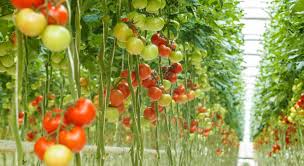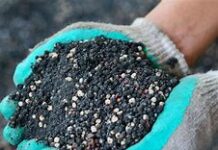Rain or shine, Moses Karanu no longer worries about feeding his five cows. The young farmer has found a lasting solution-hydroponics fodder, a method that allows him to grow fodder for his livestock, throughout the year.
Gone are the days he could watch helplessly as his animals stared at starvation, especially during the hard-hitting drought that was recently experienced in most parts of the East African region.
Recurring dry spells in Africa are leaving millions of livestock starving, and millions of people facing food insecurity.
In hydroponics, farmers have found a way of beating drought. They mix seeds of wheat,sorghum, or barley with water in specialized trays and wait for a week. They then harvest the lush green fodder which they feed to livestock.
Karanu is among the hundreds of farmers across the country who are embracing hydroponic farming.
Nancy Gathering, another farmer, almost sold her herd of ten cows three years ago. The cost of animal feeds was skyrocketing, and dairy-farming was increasingly becoming untenable.
She says she used Kes10000 per month to buy nappier grass for her cows.
Their milk production could be affected by drought, sometimes leaving her counting losses. “I was earning Kes18000 per month after selling milk. Yet, I was using a similar amount to feed the animals. It didn’t make business sense.”
Through a friend, she learned of the hydroponics concept and has never looked back.
With this concept, she was able to grow her income two-fold while cutting her expenses by a huge margin.
“At this rate, I plan to buy more cows to further boost my income.”
What’s hydroponics all about?
It’s a soil-less culture technology that uses less water and land and yields up to ten times more than an open field.
Using the method, you can mix grains, including maize, wheat and barley in trays. They take only days to grow, compared to months when done conventionally in an open field.
According to Samuel Mbugua, a partner at hydroponics firm, Grandeur Africa, this kind of fodder is a perfect solution for farmers given that it supplies them with feeds all round the year.
“It’s also less costly than animal feeds,” he says.
Mbugua,a biochemistry graduate, quit his job to rear pigs. A few months after starting his pig farm, the government introduced value added tax on animal feeds, a move that threw him out of business.
“The price of animal feeds soared and we couldn’t afford to feed our pigs,”
When he was about to throw in the towel, he came across the concept of hydroponic farming.
Using this concept, Mbugua and his partners were back in business. They banked on it to grow their business. It paid off.
After a few months, they saw a need to introduce the concept to many other farmers who had a similar challenge.
And that’s how they founded Grandeur Africa, a company that installs hydroponic units across Africa.
The firm trains farmers about the best practices in hydroponics farming. It has gone beyond borders and now serves farmers in as far away as Nigeria.
To set up a hydroponics unit, Mbugua says a farmer should first build a shelter as the crops need shade.
They also need to buy quality seeds and aluminium trays.
Once everything is in place, farmers simply put the seeds in the trays, add the nutrients and water and wait fie the fodder to mature. It takes only seven days. “For cows, you can feed them with seven-day old fodder. Rabbits can be fed with three to four-day old fodder.”
Mbugua says the concept can also be used to reduce conflicts within pastoralist communities. He added that these communities always fight over grazing land, yet hydroponics could help them feed their animals sustainably.
The hydroponics system has been around for hundreds of years in the medical world. However, it’s only gaining traction in Africa.
According to experts, the fast rising concept could dominate food production in future.
Although it has helped change farmers’ fortunes, hydroponics has its challenges.
Mbugua said many farmers do not have the financial resources to buy the trays and to build shelter needed to grow hydroponic fodder.
He added that a simple shed costs Kes10000, but most small holder farmers do not have that kind of capital to invest in hydroponics fodder.
Secondly, hydroponics fodder requires about a litre of water per kilo of fodder, which is still a lot of water for most people, especially in dry areas. However, it’s important to note that hydroponic fodder still uses less water than conventional methods of farming.
To further boost adoption of this concept, experts say there’s need for more extension officers to train farmers on specialist skills around hydroponics farming.
Mbugua plans to reach out to more farmers in the next five years to popularize the concept. He believes it could be the future of farming, across Africa.



















